Recognizing Nighttime Separation Anxiety in Babies
When the sun sets and night’s bedtime approaches, many parents find themselves in a difficult scenario: their baby is becoming clingy, teary and is fighting to sleep. This is a typical developmental phenomenon, referred to as baby separation anxiety at night, which peaks from 8 – 18 months but can begin as early as 4-5 months. The first step in understanding and addressing this natural developmental milestone is to acknowledge it in order to help your baby use kind and gentle approaches to get through it.
Separation anxiety is born out of your baby’s increased cognitive development – they now understand that you exist even when they can’t see you (object permanence), but they haven’t quite yet understood that separations are temporary. With the combination of this cognitive leap and their extreme attachment to you, you have the perfect storm for your baby to be distressed at night.
Indicators Your Baby Is Suffering From Nighttime Separation Anxiety
- Crying or screaming more when you leave the room
- Waking up often during the night looking for reassurance
- Clinging behaviors, especially at bedtime
- Difficulty self-soothing after night wakings
- Expressing discomfort and distress when placed in their crib.
According to research published in the Journal of Pediatric Psychology, up to 50% babies experience some degree of separation anxiety during the 1st two years of life, making separation one of the most known sleep challenges parents encounter.
The 5 Simple Solutions for Nighttime Infant Separation Anxiety
1. Establish a Consistent and Relaxing Bedtime Routine
A consistent bedtime routine prior to sleeping provides security and sends the signal that it is time to go to sleep. A familiar sequence of events builds confidence, and alleviates anxiety around the transition to sleep.
How to make it work :
- Keep the bedtime routine short (less than 30 minutes) to avoid over tiredness
- Include 3-4 calming activities in your routine (bath, massage, book, lullaby)
- Use the same order every night, even when you travel for vacation
- Start the bedtime routine same time every night, to help regulate baby’s internal clock
Dr. Jodi Mindell’s research around sleep has concluded that babies with a consistent bedtime routine fall asleep 30% more quickly, and wakes less throughout the night.
2. Practice Gradual Departures and Returns
When parents say goodbye to their babies suddenly, it can be unsettling and babies can learn to distrust, as they have seen a parent leave (or that it is possible for parents to leave) but have not seen a parent return. Gradually leaves and returns may help to foster trust and security around departures and arrivals.
You can take a step-by-step approach to work toward longer and more gradual departures from your baby.
- Put your baby, who is drowsy but awake, in his/her crib
- Sit beside the crib and give gentle touches or pats.
- After your baby is settled (*staying next to the baby*), you can move your chair halfway across the room.
- After several nights (when your baby is comfortable), you can transition to the door frame.
- Finally, you can go just outside of the room and say good night (check-in, as needed).
This method, like the chair method/camping out, builds an awareness to your baby of separation and connection through a gradual process.
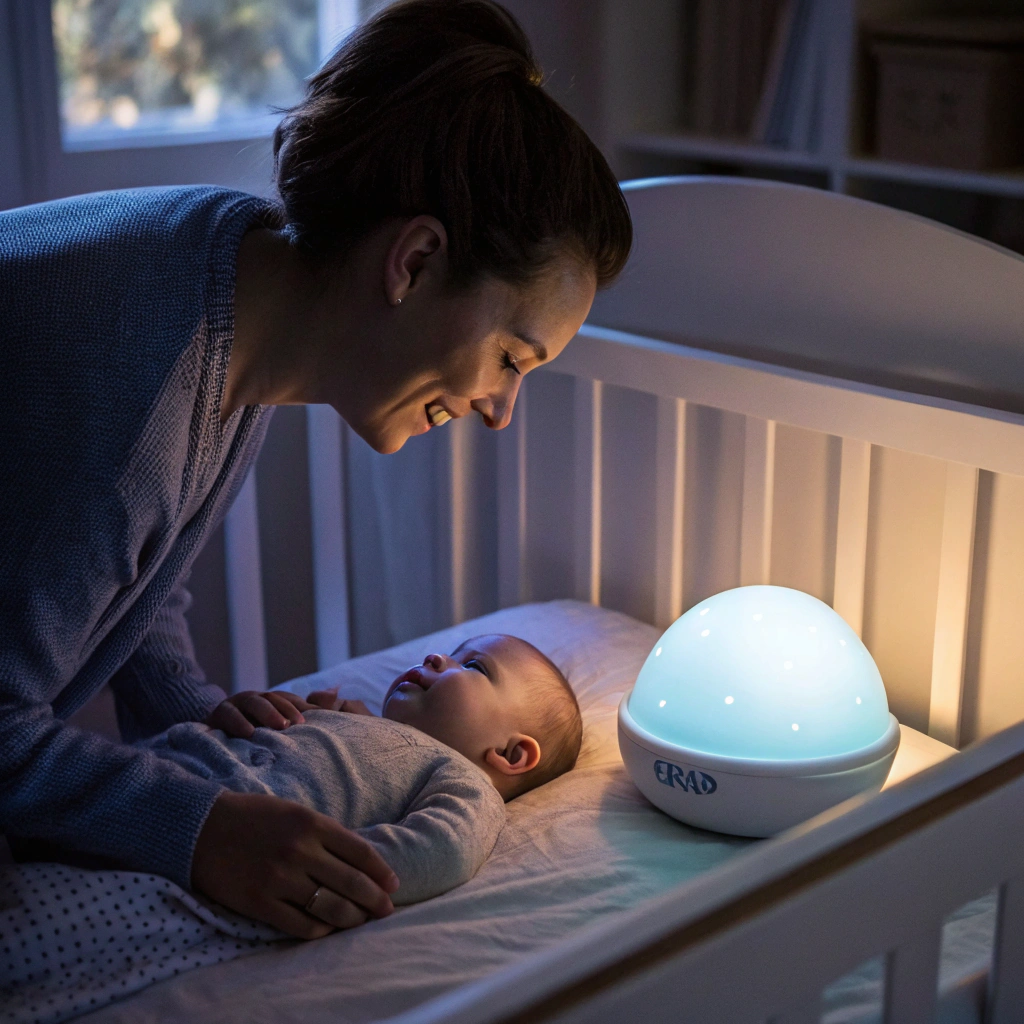
3. For Comfort, start a Transitional Object
Introducing a transitional object around 6 months of age, once it is safe to have things in the crib, can serve as a symbolic bridge between you and your baby,
Choosing a transitional object can be :
- Small, breathable lovey with no removable parts
- You smelling like you, on a tee (ages 12 months and up).
- A special blanket (for toddlers 12 months and up).
- Stiffer with features that are securely attached (for older babies).
According to a study from the Infant Behavior and Development, transitional objects play a major role in reducing separation anxiety, and help babies in learning to soothe themselves.
4. Create White Noise and Introduce Familiar Smells Both white noise and familiar smells can help your cat relax in a new environment.
Environmental cues can satisfy the need to offer babies a womb-like, vertical space that makes your baby feel secure when you are not there.
Psycho education: Establishing a soothing environment supports :
- White noise machine at 50-65 dBA to represents the closest sound to the phone womb.
- Lavender-scented vapor is placed in the room — not the crib — of one baby, who ends up with higher sleep quality than a control group.
- swaddle/sleep sack for some comforting pressure, like being held (if age-appropriate)
- Room temperature of comfort (68-72 degree F) – this will help to prevent unnecessary discomfort that will increase anxiety / distress
These sleep props establish a regular sleep environment to help baby feel secure and contained.
5. Use the “Peek-a-Boo” Method
The peek-a-boo technique can be a playful antidote to separation anxiety, teaching that the separation is just temporary, as in the game.
How it works :
- Intentionally have small separations as strippers with peek-a-boo throughout your days when you can.
- You’ll work your way up to longer and longer periods where you’re disappearing and reappearing.
- Talk as you walk away: “Mommy’s going to the kitchen, I’ll be back!”Narrate when you leave: “Mommy is going to the kitchen, I’ll be right back!”
- Always return quickly and enthusiastically.
- 13 Do this same thing at bedtime using quick check ins, gradually adding time between check ins.
Remember : Progress may not be linear and your baby will still likely have a mix of good and bad nights (especially during leaps, teething and when sick). Long term change that will help improve separation anxiety at night requires consistency and patience.
Finding A Way To Bond And Be Alone In Order To Sleep Well
Not to loosen the attachment to you as his /her mother or father but to help baby feel confident and safe when you are not at his/her side. All are gentle methods of helping your baby learn to sleep on his or her own, while respecting the special bond between mother-child, and father-child.
Remember Progressive improvement may be slow, and your baby will have good nights and bad nights, especially when he or she is experiencing developmental leaps, teething or is sick. Long-term change is required for separation anxiety and night time patience for a separation anxiety.
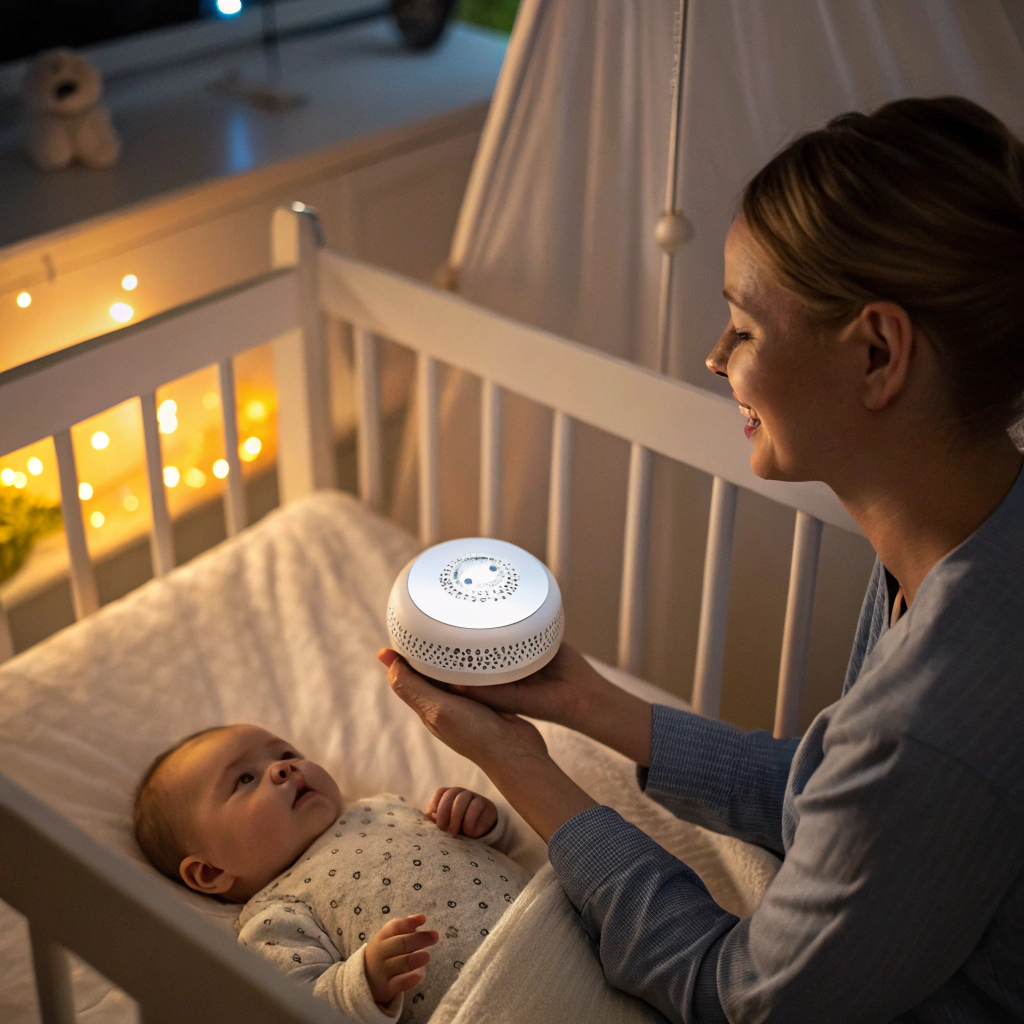
Conclusion
Managing your baby’s night time separation anxiety involves a process, one that involves time, awareness and gentle easy practices that are respecting of your babies emotional need for comfort. Rather than put an end to your baby’s natural attachment, these five approaches will help make bedtime a time of opportunity rather than a time of stress. And by practicing these baby joy tips regularly, not only will you help everyone in the family get and stay asleep, you’ll also help baby feel more emotionally developed and secure, too. And you know this will pass, and with your love and nurturing they will find it in themselves to grow into a happy settled little person, and be able to sleep peacefully as you’re there.
Frequently Asked Questions
What age does baby separation anxiety at night start?
Separation anxiety normally starts around 6-8 months, peaks at about 10-18 months and might appear in many different forms until your child is 3. In reality, evidence could emerge early as 4-5 months. Object permanence becomes established, and object data easy in the absence of direct contact has been gathered.
Is it common for a child who used to be a good night sleeper to suddenly develop anxiety at night?
Yes, this is completely normal. Sleep regressions typically occur in concert with developmental leaps and gaining new skills and awareness. A baby that once slept just fine may begin to have separation anxieties as they get older and now have a greater understanding of attachment and object permanence.
How can I tell if it’s separation anxiety or if my baby’s SOS cry at night?
Separation anxiety is a crying that gets worse when you leave and stops when you return and that often gets bundled in with daytime cleanliness and fear of new people. If baby is crying with you in the room, or other signs along with it, or ear tugging, fever, call your pediatrician.
If I respond to my baby’s separation anxiety, will it develop into bad sleep habits?
No, responsive parenting during your baby’s anxious times is not creating a dependent baby; it is creating a secure one. The research demonstrates that babies with consistent emotional care are more developmentally independent than babies left to cry.
How long does nocturnal separation anxiety stage last?
The typical limit on the development of stages of separation anxiety is 2 – 4 weeks per stage (it happens, for example, that a particularly upset baby has a deep and longer-lasting stage of separation anxiety). Here’s the good news: Big separation anxiety is mostly behind them by 2 or 3 years old.
Can I try a modified form of sleep training with my baby, who is going through separation anxiety?
Some of the gentler sleep coaching methods — the ones that you are around for and crowd out the routines more slowly — can last through separation anxiety. The cry-it-out methods can exacerbate the anxiety and should not be tried at the height of the separation anxiety.
My baby wakes up crying because she’s going through separation anxiety at the moment, should I be lifting her?
Some sort of physical presence at a sleep time, be it touch, talking, or just being in the same room is also a strategy for teaching your baby to sleep independently (at least independently in their own sleep space), without actually needing to pick up, reassure (but only a little), pick up, or even pick up and lay them back down again.
Should I use a night light to help my baby with separation anxiety?
If your baby finds it comforting, a warm, soft-colored night light is fine for some babies at 12 months and older. For younger babies, total dark is good for sleep and creating good sleep hormones and white noise plays like an auditory pacifier.
My baby will only fall asleep with me. They won’t let my partner do bedtime. How do we divide up the bedtime duties?
So gradually we can have my partner do chunks of the bedtime routine with me there, and then step by step with me not there. And when you’re solid during the cross-transfer stage, your baby learns to accept bedtime support from either parent.
Can separation anxiety also lead to early wake times?
Yes, if you have a baby with separation anxiety, he or she will likely wake earlier as a result and struggle more to fall back asleep. They realize you’re not there while sleeping more lightly in the morning, and start to panic.
Can seeing me on a video monitor, or hearing my voice on a recording, help?
For older babies (12+ months), you crawling in to their bed after they’ve fallen asleep every single night reinforces that they cannot fall asleep “without” you and you being gone makes their brain remember that. Some children watching a video monitor where they can see you or hear your voice on a recording makes their anxiety worse as you’re reminding them you aren’t there just text/ to a point. Direct, gradual withdrawal techniques tend to be more effective.
How do I cope with the nocturnal equivalent of separation anxiety that I experience when traveling or under new circumstances?
Bring familiar sleep accessories (noise machine, lovey, sleep sack) and try to mimic your “normal” bedtime routine as closely as possible. You might also consider some co-sleeping while you are on the road, and do your best to give yourself the leeway to soothe your child before separations in new settings.
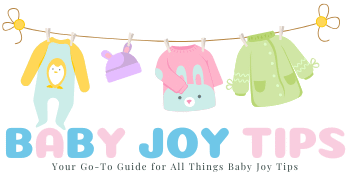
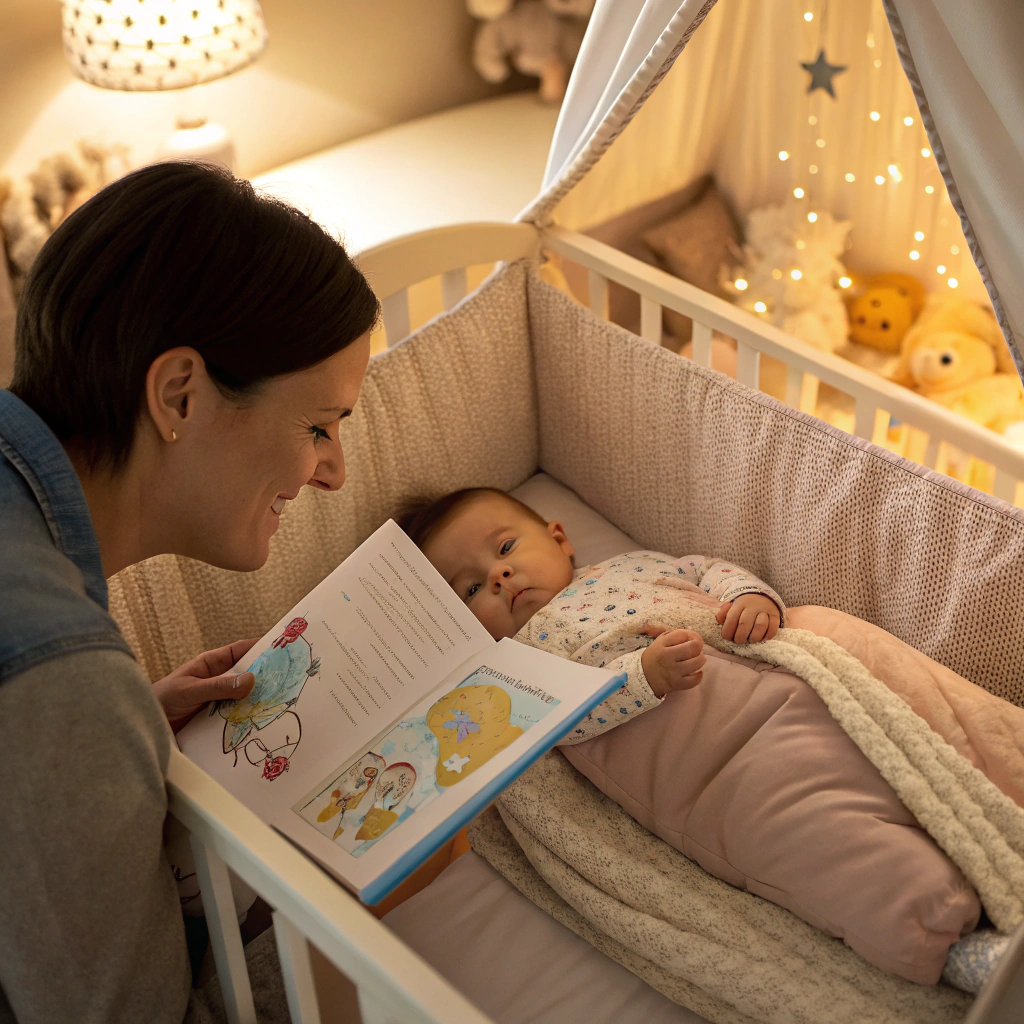


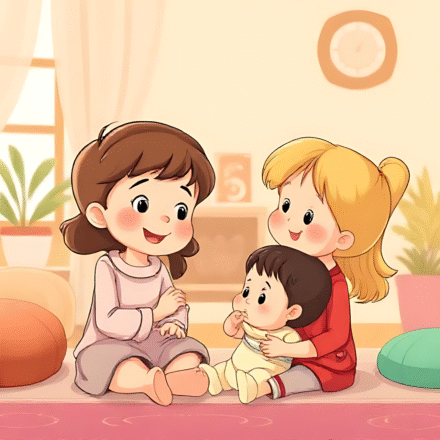
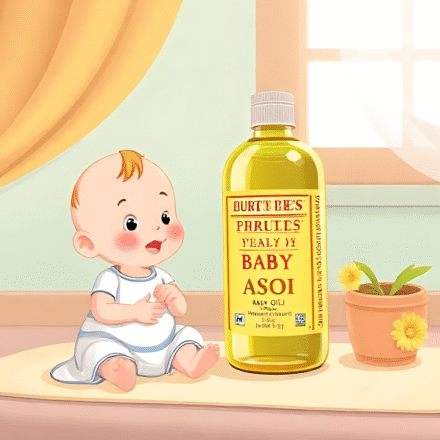
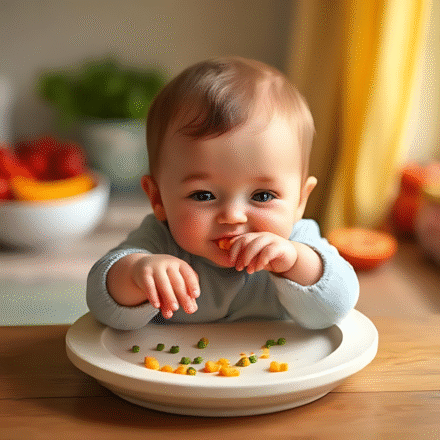
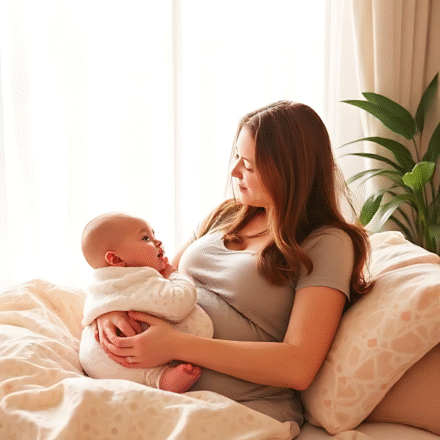
Leave a Comment